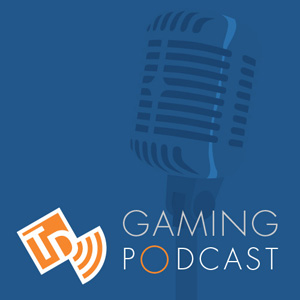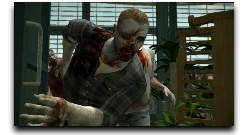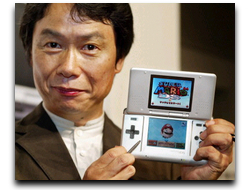Beauty of Micro-transaction MMO’sBeauty of Micro-transaction MMO’s
 There is room to grow in the world of massive multiplayer online gaming. A large online community should not have to subscribe to a monthly charge to play great MMORPG’s because there are other known models that work, including the micro-transaction based MMO.
There is room to grow in the world of massive multiplayer online gaming. A large online community should not have to subscribe to a monthly charge to play great MMORPG’s because there are other known models that work, including the micro-transaction based MMO.
At first, this sounds like a dirty word, micro-transaction. Often we relate it with being “nickle and dimed” through a video game by means of dirty marketing which feeds our enthusiastic gamer addiction. Put this thought aside for a minute and keep an open mind.
Imagine a game with worlds the size of World of Warcraft and stories as in-depth as Guild Wars (which is not monthly itself) but free from monthly payments (or “playments” a new term that needs to be coined). The reason behind the monthly charge covers service fees, technical support staff, bandwidth, servers and sheer volume of Activision Blizzards user base.
The micro-transaction concept could still help pay for all the overhead of running an online gaming business because gamers tend to be over-enthusiastic about their great addictive games. If you build a game with excellent content, replay value and strive for a community atmosphere a micro-transaction title can work just as well as a subscription based game.
One beautiful aspect to micro-transaction models is paying for content when you’re willing to pay. This includes cosmetic character alterations, basic needs items (health potions) and other products to enhance the playability of the game without requiring the gamer to do so. There will be some gamers that use this as a “free ride” and never buy anything while other gamers spend way too much because they have expendable income which helps balance out costs.

 It seems the console maker who’s trailing in sales typically says how great competition is and how it’s great for the consumer. Sony’s not leading the console race, as of now, and Sony Computer Entertainment Europe president David Reeves stated in a
It seems the console maker who’s trailing in sales typically says how great competition is and how it’s great for the consumer. Sony’s not leading the console race, as of now, and Sony Computer Entertainment Europe president David Reeves stated in a  This weeks gaming podcast, we’re talking a bit about E3 but not enough to make you sick. We’re curious to the fate of the E3 event, is it really done or will it live on? We’re finishing up the RPG history and we take a look back at the Atari title KABOOM! Was he catching bombs with a box, barrel or pie?
This weeks gaming podcast, we’re talking a bit about E3 but not enough to make you sick. We’re curious to the fate of the E3 event, is it really done or will it live on? We’re finishing up the RPG history and we take a look back at the Atari title KABOOM! Was he catching bombs with a box, barrel or pie?
 We’re already looking at the results of an Activision Vivendi union and now Electronic Arts is slowly working towards taking over Take-Two. Activision Blizzard is larger than that of EA but would the Take-Two buy-out grow EA into the number one publisher once again?
We’re already looking at the results of an Activision Vivendi union and now Electronic Arts is slowly working towards taking over Take-Two. Activision Blizzard is larger than that of EA but would the Take-Two buy-out grow EA into the number one publisher once again? In the race for best rock simulation, Activision has pulled out a legend and brought to their franchise. Jimi Hendrix will play a role as an in-game character along with a couple tracks you may have heard: Purple Haze and The Wind Cries Mary.
In the race for best rock simulation, Activision has pulled out a legend and brought to their franchise. Jimi Hendrix will play a role as an in-game character along with a couple tracks you may have heard: Purple Haze and The Wind Cries Mary. In 1986 SNK released Ikari Warriors, it had all the makings of a classic title. Cool weapons, time strategies, two player action and a great challenge. We’re now seeing folks reproduce some of the essence of classic games by creating platformers like Little Big Planet and
In 1986 SNK released Ikari Warriors, it had all the makings of a classic title. Cool weapons, time strategies, two player action and a great challenge. We’re now seeing folks reproduce some of the essence of classic games by creating platformers like Little Big Planet and  Dead Rising is being ported to the Nintendo Wii, only two years after the original title. In Japan, they’ve changed the name to Dead Rising: Zombies Sacrifice, perhaps to make it sound like a different game.
Dead Rising is being ported to the Nintendo Wii, only two years after the original title. In Japan, they’ve changed the name to Dead Rising: Zombies Sacrifice, perhaps to make it sound like a different game. Miyamoto said Nintendo used E3 as a platform for spreading the word to a broad audience based on the media present at the event, they’re not speaking to the core audience. So, if you’re a core audience gamer and you were confused on why Nintendo didn’t build their presentation to be all glitz and glamor, it’s because they weren’t talking to you.
Miyamoto said Nintendo used E3 as a platform for spreading the word to a broad audience based on the media present at the event, they’re not speaking to the core audience. So, if you’re a core audience gamer and you were confused on why Nintendo didn’t build their presentation to be all glitz and glamor, it’s because they weren’t talking to you. A 3D version of Deal or No deal sound desirable to you? Perhaps you’re a game show fan and just can’t get enough Howie, if so, you’re in luck. Koch Media announced their new casual games label As Seen On TV which will bring popular TV brands to the console.
A 3D version of Deal or No deal sound desirable to you? Perhaps you’re a game show fan and just can’t get enough Howie, if so, you’re in luck. Koch Media announced their new casual games label As Seen On TV which will bring popular TV brands to the console.